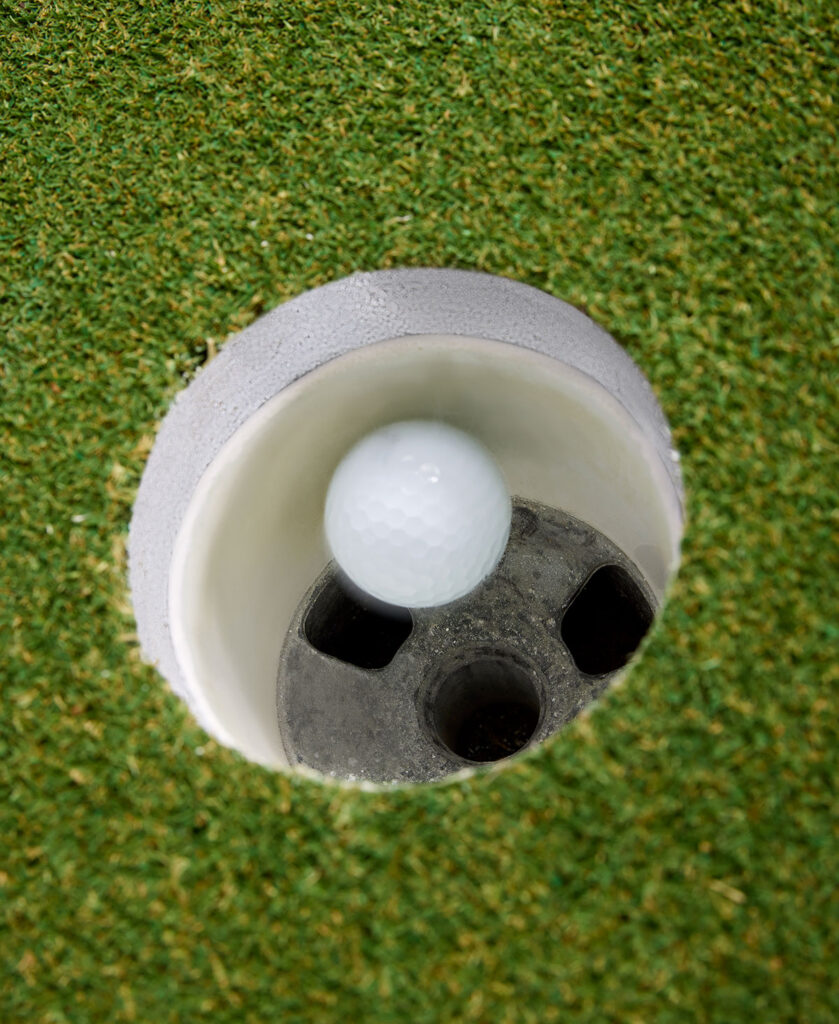I bet you didn’t know that many of the game’s best on the greens hail from Australia. What are we doing down under to rattle the bottom of the cup more often? I just declassified it.
Photographs by Jensen Larson
My home country, Australia, produces a lot of great putters. My theory is that the greens back home are not as manicured and smooth as they are in the United States, so we have to get very good at rolling the ball on less-than-perfect surfaces. When we come here, it’s like putting in a video game. Since the strokes gained/putting stat was introduced in 2011, four Aussies – Greg Chalmers, Aaron Baddeley, Jason Day and yours truly – have ranked No.1 on the PGA Tour in that category. Chalmers did it twice. Another, Cam Smith, was top 10 twice.
You can learn quite a bit from our methods – like how Badds is all wrapped up in the putt, not his stroke.
I also like how Jason is so deliberate in his process. Me? I’m not very mechanical. I practise in a way that makes my stroke as free as possible when I play. That’s my first “secret” to share with you. Don’t think on the greens so much. Try to hit every putt with an empty mind. That will put more flow in your stroke. If you want to putt like an Aussie, keep reading.

Make a Stroke, not a strike
i spend five minutes a day working on the mechanics of my stroke so that when I’m on the course, I don’t have to think about it. The proper motion is already ingrained. That way, my mind is free, and all I’m picturing is the ball going into the hole at the ideal angle and speed. If there’s a feel that I have for the stroke, it’s that I’m pouring putts into the hole much like you would pour milk into a bowl. You probably wouldn’t tip the milk carton straight over and pour really fast. It’s a smoother delivery.
When putting, I want the putterhead to collect the ball. There’s no abrupt strike and I don’t feel like I’m accelerating or decelerating. I’m just letting the momentum of the club move the ball on my intended line [above]. If you need a visual, my putter moves like the pendulum on an old grandfather clock.



Level out your path
Several years ago, I was having trouble keeping my left arm straight through impact. I was lifting my lead elbow and the putterhead, and getting too “hitty” with the stroke. It was the one thing I had in common with many amateur golfers. To create some topspin and get the ball rolling on line, you might feel like you have to hit up on the ball. Actually, you need a much more level strike.
To correct my stroke, I started practising left-hand low, meaning I reversed the positions of my hands on the handle [above left]. I putted so well that way that it became my full-time grip. Left-hand low makes it easier to keep the back of my left wrist and elbow down. Subsequently, the putter stays low and releases properly [above middle and right]. People rarely think about what happens after impact, but the face needs to stay down and continue to move around the arc, square to the path.



Adjust your speed
I have an unusual way of factoring speed on the greens. Many good putters try to hit every putt so that the ball finishes at the same distance past the hole on a miss. Not me. I treat every putt differently. On one putt, the optimal holing speed might be four feet past the cup. On another, it’s six inches.
Why switch it up? I’m trying to hit each putt at a speed that is going to “lip in” if I catch an edge. I determine that by how I think the ball will react with the back of the cup. If the putt is super fast, I want the ball trickling in so that it hits the flagstick holder at the bottom of the cup [above middle]. If the putt is slow, the ball should hit between the top and bottom of the cup’s liner [above right].
Varying your speed gives you more of a chance at success from putt to putt.



Match the face and path
Before a round, I’ll do this drill to groove my stroke: we’ll find a straight uphill putt and place a special mat down (called a Wellstroke) that helps me see the arcing path my club should travel on to roll the ball in. My path is not dead straight along my putting line. Trying to keep the putter on a straight line forces you to get your hands more involved in the stroke, and that makes it harder to square the face at impact.
If you haven’t already, try switching to an arcing stroke. Work on it by setting up a gate of tees [above left] that forces your putterhead to move on a slight curve. The gate should be slightly wider than the width of your putterhead, and the goal is to make a straight putt [above middle and right] without crashing into the tees. The amount of arc varies slightly depending on your putter and body type, but standard is about 12 degrees of curve on either side of the ball. The goal is to keep your putterhead square to the path at all times. This drill really improves the muscle memory for a good stroke.

Get used to making the ones you need to make
My mainstay drill on tournament days is the “five-foot-circle drill” [above]. Place 12 balls down evenly apart in a five-foot-diameter circle around the hole. Use a hole with some slope so that you get 12 putts of the same length. Most of the time I’ll hole all 12, but should I miss one, I’ll go back and sink that putt at the end of the drill – or I have to start over again. I’m often confronted with five-footers on the first two or three holes out on the course, and this exercise gives me the confidence to sink those putts (the ones that can make or break a good round). Because I’ve made a lot already with this drill, I’m relaxed hitting them when I play. This drill also forces you to focus on starting the ball on a good line, which is far more important than speed on these “should make” putts.

Ratchet up the pressure
This drill is one I’ll frequently end a practice session with – and I won’t allow myself to go home until it’s completed. Set four balls down in a spiral pattern at five, 10, 15 and 20 feet from a hole. Then hit them [above]. Add up the total distance of putts made and repeat this four-ball setup three more times to different holes. The goal: make 75 feet worth of putts in a maximum of 16 tries. Just as if you were playing a tournament or an important match, you want the mindset of trying to make each putt, for sure, but should you miss, leave the the ball as close to the hole as possible. This is great for improving speed control, and, more importantly, getting you comfortable with holing putts when pressure is mounting. Use it, and you’ll soon become a clutch putter. Just don’t tell anyone about this drill. It’s our secret!



